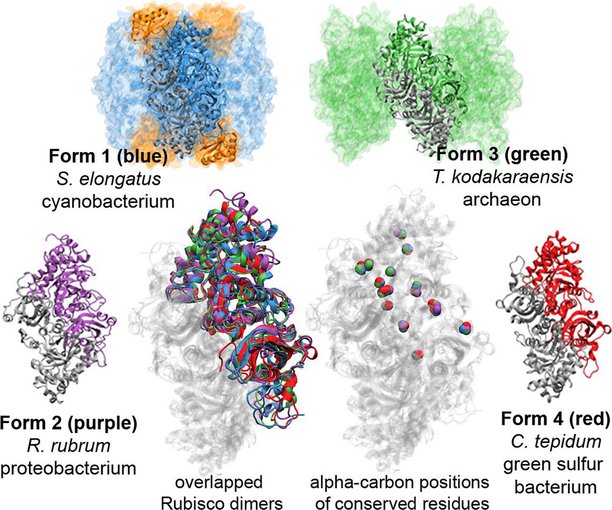
Aug. 1, 2017
Research Highlight
The Great Oxidation Event and the Rubisco Family Tree

Scientists trace the points in time where Rubisco branched out in diverse forms, before and after the Great Oxidation Event. Source: B. Kacar
Scientists with the NASA Astrobiology Institute Postdoctoral Program at Harvard University are tracing the evolution of an abundant and important enzyme that jumpstarts a separation between non-living and living.
Rubisco (ribulose-1,5-biphosphate carboxylase/oxygenase) is the key catalyst for a reaction that converts inorganic carbon to organic carbon. In plant, algae, and certain bacteria cells, Rubisco helps to connect carbon dioxide to ribulose 1,5-biphosphate (RuBP) to create the first stage of the Calvin cycle and the production of sugar; Rubisco can also catalyze RuBP to bind with oxygen in a competing reaction.
Betul Kacar and her team, using computational modeling, have reconstructed a Rubisco phylogenic family tree that traces back to key points in time where the enzyme may have evolved and branched out, particularly in relation to the period of the rise of oxygen in the Earth’s atmosphere.
The paper, “Constraining the timing of the Great Oxidation Event within the Rubisco phylogenetic tree,” is published in Geobiology. The research was supported by a NASA Astrobiology Postdoctoral Program Fellowship, a NASA Early Career Collaboration Award, a John Templeton Foundation Research Grant, an Agouron Institute Geobiology Postdoctoral Fellowship, and an Amazon in Education Grant.
Kacar and her colleagues presented research on the reconstruction of ancient Rubisco and tracing its family tree at the 2017 Astrobiology Science Conference. More details can be found in the story published by New Scientist.